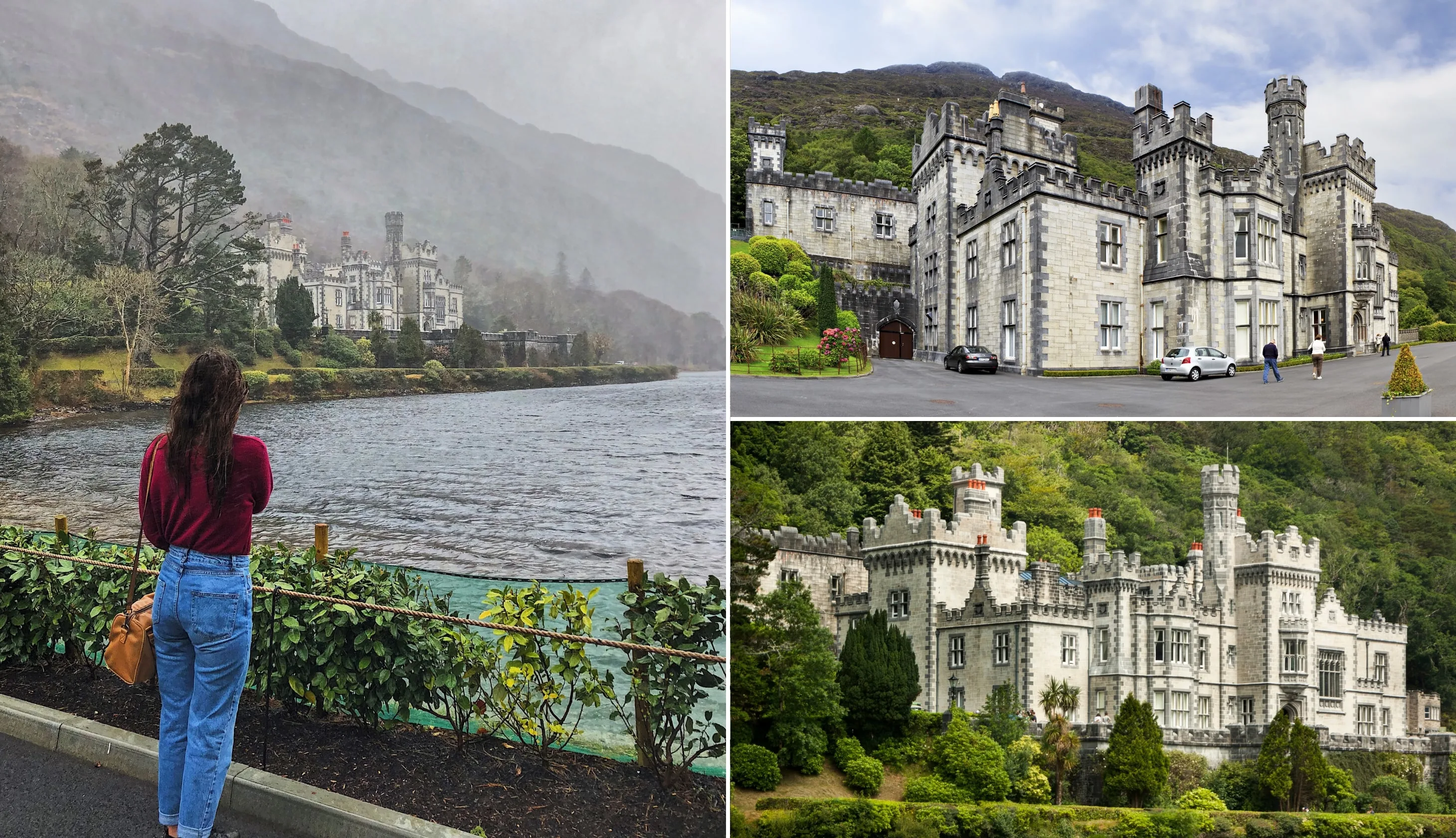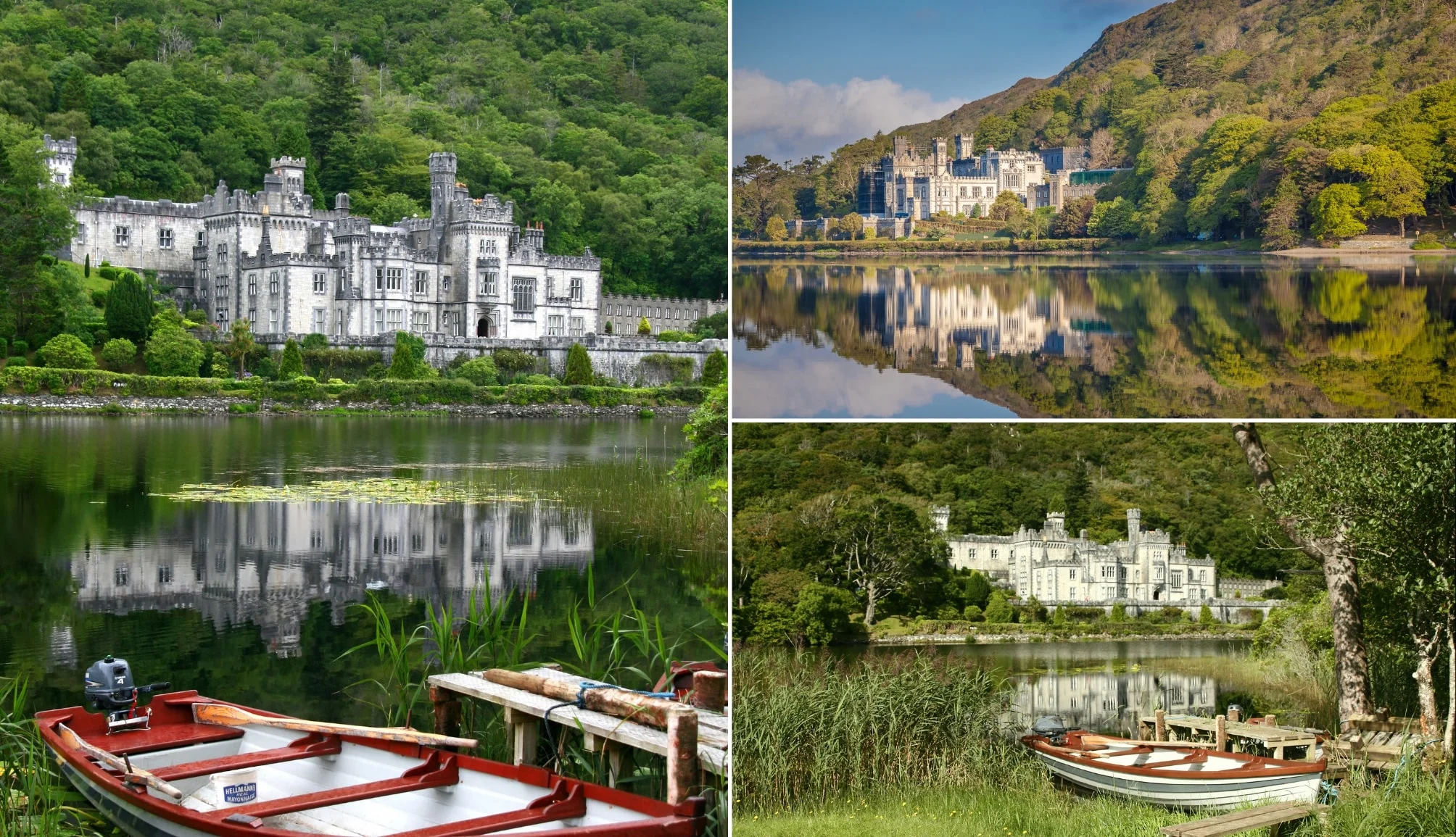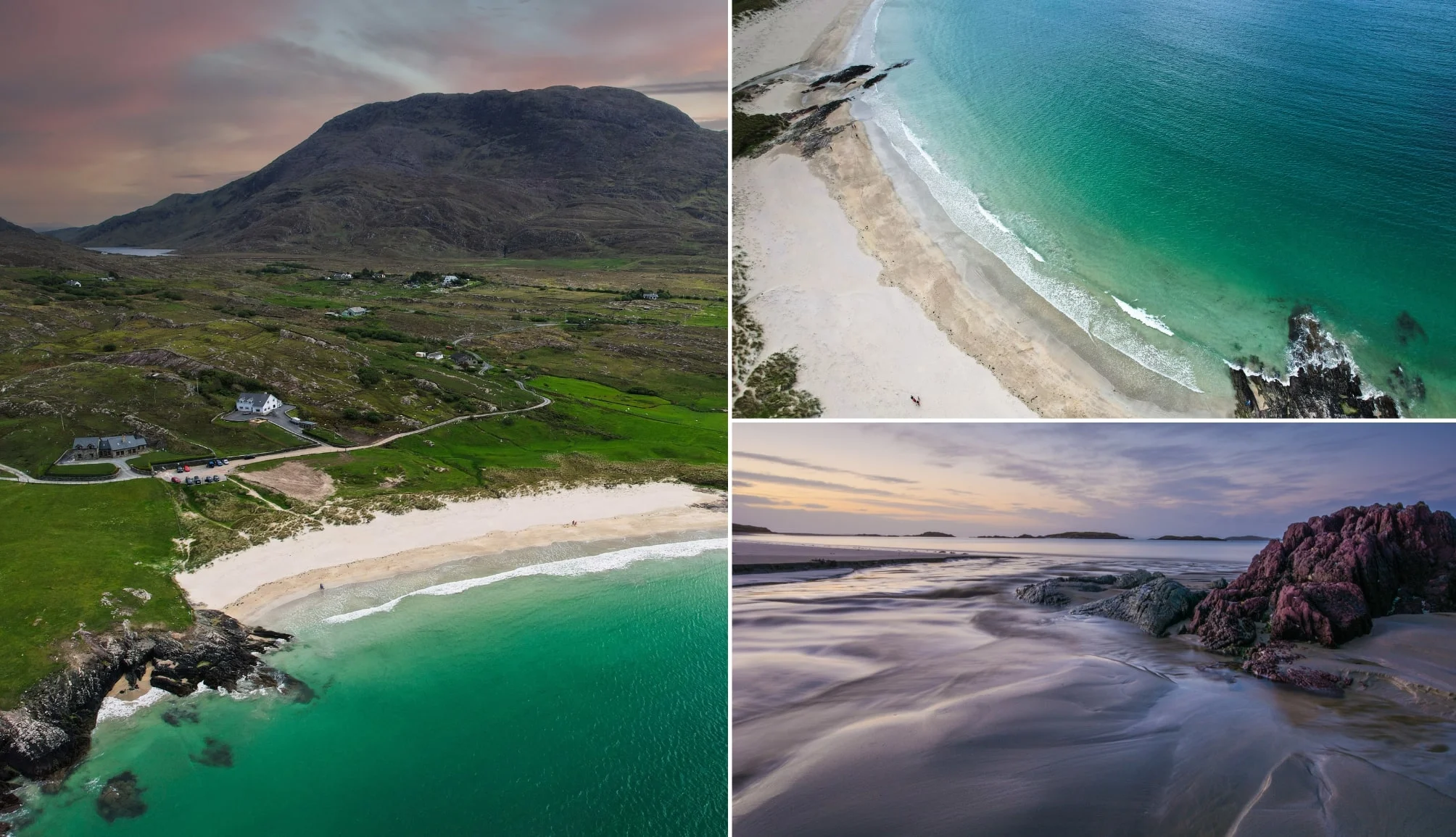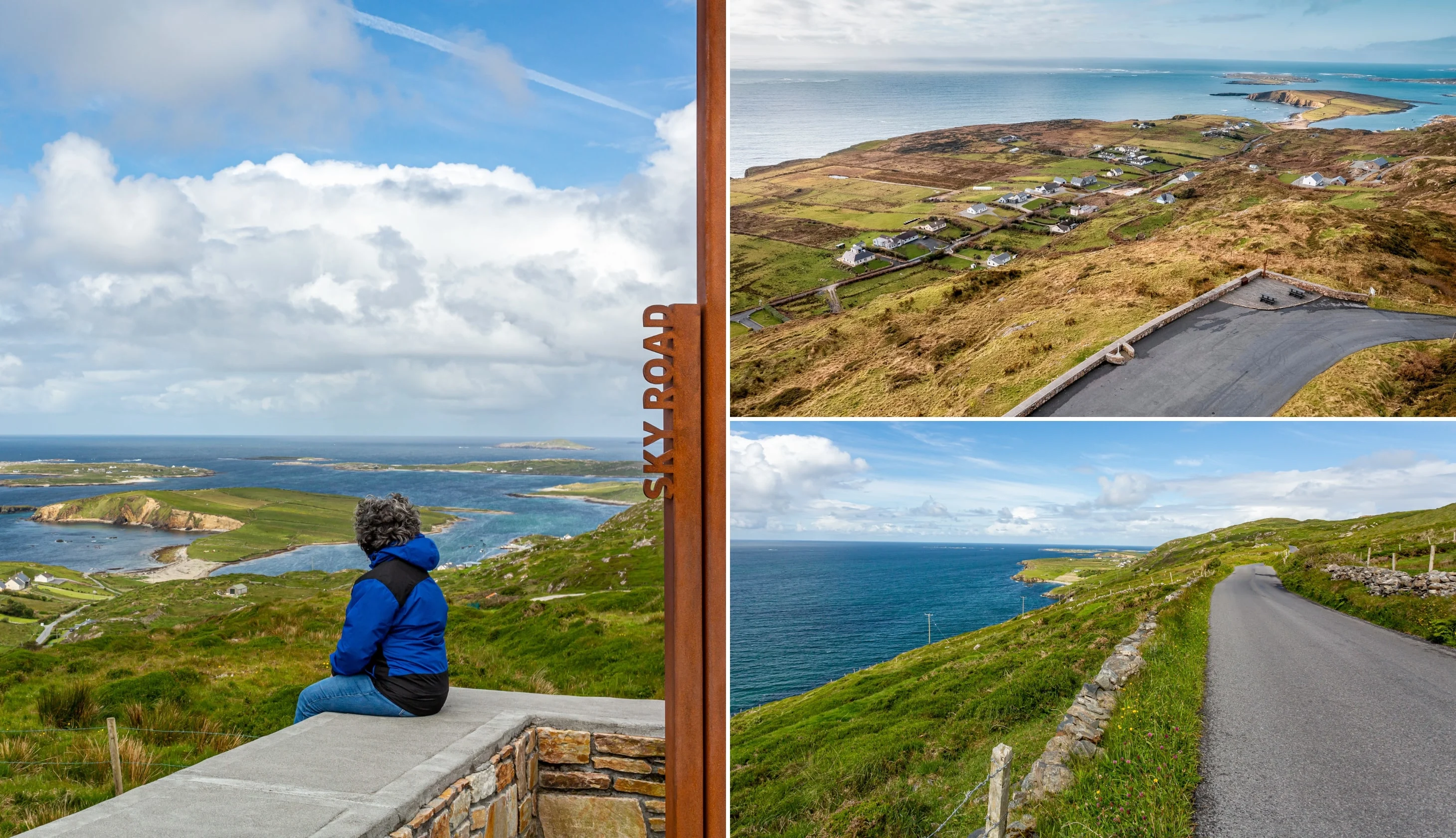Kylemore Abbey is one of the most impressive buildings in Ireland.
Built in 1868, the abbey is a sight to behold and it has an extensive and very tragic history attached to it.
Located in Connemara, it’s one of the most popular places to visit in Galway for good reason. Discover everything you need to know below.
Some quick need-to-knows about Kylemore Abbey

Photos via Shutterstock
Although a visit to Kylemore Abbey is fairly straightforward, there are a few need-to-knows that’ll make your visit that bit more enjoyable.
1. Location
Kylemore Abbey is in the heart of the breathtaking Connemara region on the Wild Atlantic Way, perched on the banks of Pollacapall Lough, surrounded by mountains and enchanting woodland. It’s right on the edge of Connemara National Park, one hour and 20 minutes from the centre of Galway City.
2. Admission
Tickets cost €16 for adults and €13.50 for students and seniors, while children aged 15 and under can enter for free. Admission includes entrance to the abbey’s ground floor, the mausoleum, the Neo-gothic church, the Victorian Walled Garden, and the abbey’s various woodland trails.
3. Opening hours
Kylemore Abbey’s opening days vary depending on the time of the year, however, from January 9th, the abbey is open Friday to Sunday, with opening hours of 10am to 4:30pm (with the last admissions at 3:30pm).
4. The shuttle
The abbey’s Victorian Walled Gardens are a pleasant stroll from the Visitor Centre, along the edge of Maladrolaun Lake. However, if you’re not feeling up to it, you can take the free shuttle bus that leaves from the Visitor Centre every 15 minutes.
The history of Kylemore Abbey

The story of Kylemore Abbey is a tragic one that spans over 150 years since the foundation stone was laid by a woman of the name of Margaret Vaughan Henry.
Over the course of 150 years, the Abbey has seen it’s fair share of tragedy, romance, innovation, education and spirituality.
A story that started with love
Kylemore Abbey was constructed as a castle in 1867. Its foundation stone was laid on September 4th, 1867 by Margaret Vaughan Henry.
Margaret was the wife of a Manchester-born fella named Mitchell Henry. Now, although Mitchell was technically English, he claimed that every drop of his blood was Irish.
When the pair married in the mid-1840s, they honeymooned in the west of Ireland. It was during this time that they first laid eyes on a hunting lodge in the valley of Kylemore.
Mitchell was a wealthy man with a vision
When the pair visited the Connemara region for the first time, it was during a period of desperation, hunger and disease.
However, Mitchell could see Connemara’s potential and believed he could drive economic growth to the area.
Mitchell was the son of a wealthy cotton merchant, but he was wealthy in his own right, also. He was a skilled pathologist and eye surgeon and owned a successful practice in the UK.
Then tragedy struck
When his father passed, Mitchell became immensely wealthy and decided to quit his medical career, moving to liberal politics where he believed that he could change the world.
In 1874, a couple of years after Kylemore Abbey was completed, the Henry family took a trip to Egypt. It was while travelling to Egypt that Margaret became ill.
Tragically, nothing could be done to help her and she passed away at just 45 years of age. Margaret’s body was returned to Kylemore where her remains were placed in a red brick mausoleum in the woodlands of the Kylemore estate.
To this day she lays alongside Mitchell in the little Mausoleum in the woods.
The Benedictine Nuns
In 1920, the home was bought by Irish Benedictine Nuns, a community of nuns who had fled to Ypres, Belgium in 1665 to escape religious persecution in Ireland.
After Ypres was heavily bombed during World War I, the nuns has no choice but to flee Belgium and return to Ireland.
The first Irish Benedictine Abbey in Ireland
They converted the castle into Kylemore Abbey, which became the first Irish Benedictine Abbey in Ireland! The nuns later opened an international boarding school, and a day school for local girls, which ran up until 2010.
In 2015, the abbey partnered with the University of Notre Dame (in the USA), and 100 students moved to the abbey.
Recent times
In 2022, Kylemore Abbey was accepted into the English Benedictine Congregation, which includes 245 other members.
Today, the beautiful abbey is one of the most visited attractions in the West of Ireland, with over 500,000 visitors annually!
Things to see at Kylemore Abbey
One of the reasons that a visit to Kylemore Abbey is one of the more popular things to do in Ireland is due to the volume of things there are to see and do.
Below, you’ll find information on the Mausoleum, the Church and the abbey itself.
1. The abbey (from afar)

Photos via Shutterstock
One of the best viewpoints of the abbey is actually from the visitor car park. The car park is on the other side of Pollacapall Lough, so you’ll be able to admire the abbey from across the water with the beautiful backdrop of the mountains.
Once you’ve taken in the magnificent views, walk over to the abbey where you can enjoy a self-guided tour of the ground floor and its beautifully restored period rooms.
The rooms tell the story of the abbey’s original owners, the Henry Family through hidden audio and modern visual effects.
2. The neo-Gothic Church

Photos via Shutterstock
The neo-Gothic church at Kylemore Abbey is a five-minute stroll from the abbey along the shores of Pollacapall Lough.
The church has been described as a ‘Cathedral in Miniature’, with a stunning arched ceiling, intricately-carved windows, and stunning marble pillars from each of Ireland’s four marble regions.
Built in 1881, the church was commissioned by Mitchell Henry in honour of his late wife Margaret, who passed away of dysentery while on holiday in Egypt.
A closer look reveals beautiful details like carved flowers, angel features, and birds. These aren’t typical of a Gothic structure and are a clear tribute from Mitchell to his wife.
3. The gardens

Photos via Shutterstock
Kylemore Abbey boasts a beautiful Victorian Walled Garden which dates back to the late 1800s. At its prime, there were 21 heated glasshouses and 40 gardeners tending to the plants.
The garden was extremely advanced for its time and was even likened to Kew Gardens in London!
Today, the garden covers six acres divided by a small stream, with a vegetable garden, herb garden, and fruit trees on the western half, and formal gardens and glasshouses on the eastern half.
Overlooking the garden, there’s a seasonal tea house where you can enjoy coffee, tea, and cakes, either indoors or outside on the picnic tables.
You can reach the gardens through one of the abbey’s woodland walks, or take the free shuttle bus.
4. The Mausoleum

Further past the church, tucked away in a peaceful spot, is the mausoleum, Mitchell and Margaret Henry’s final resting place.
Unlike the splendour of the neo-Gothic church, the mausoleum is a modest building, built from unusual yellow bricks with a simple cross above what used to be the entrance.
Mitchell Henry was laid to rest here in 1910 after passing away in London, joining his wife Margaret who was placed there decades earlier.
Things to do near Kylemore Abbey
One of the beauties of Kyelmore Abbey is that it’s a short spin away from many of the best places to visit in Connemara.
Below, you’ll find a handful of things to see and do a stone’s throw from Kylemore Abbey!
1. Glassilaun Beach (20-minute drive)

Photos via Shutterstock
Glassilaun Beach is arguably one of the most beautiful beaches in Galway. The horseshoe-shaped beach has white sand and turquoise waters, framed by the backdrop of stunning mountains.
2. The Sky Road (20-minute drive)

Photos via Shutterstock
The Sky Road is a 16km loop starting and ending in Clifden, passing through some rugged coastal landscapes and attractions like Clifden Castle and Eyrephort Beach.
3. The Doolough Valley via Leenane (starts 20 minutes away)

Photos via Shutterstock
The Doolough Valley is an incredible part of County Mayo, full of raw isolated beauty and history. High up in the mountains, the views are spectacular, with two serene lakes that seem to have been frozen in time.
FAQs about Kylemore Abbey in Ireland
We’ve had a lot of questions over the years asking about everything from ‘Are the Kylemore Abbey reviews accurate?’ (yes!) to ‘When was it built?’.
In the section below, we’ve popped in the most FAQs that we’ve received. If you have a question that we haven’t tackled, ask away in the comments section below.
Is Kylemore Abbey worth visiting?
Yes, the Kylemore Abbey reviews online give you a good insight into the experience that’s on offer here. Expect rich history, magnificent architecture and gorgeous gardens.
Why is Kylemore Abbey famous?
Kylemore Abbey’s fame is due to it being one of Ireland’s standout landmarks. It has been part of the west of Ireland’s ‘tourist trail’ for many, many years and it’s rare you’ll hear of someone visiting and not enjoying their time there.
Do nuns still live in Kylemore Abbey?
Yes. They converted the castle into Kylemore Abbey, which became the first Irish Benedictine Abbey in Ireland! The nuns later opened an international boarding school, and a day school for local girls, which ran up until 2010.


Jenifer McMurtray Schultz
Sunday 3rd of April 2022
I would absolutely love to take a tour to see this beautiful architecture Castle but puzzles being is it says he he built it with 33 rooms but it says 4 bathrooms so how are you going to have 33 bedrooms but only four bathrooms that puzzles me or am I misreading that anywho I would love nothing more than to take a trip to Ireland I am Irish by blood my ancestors lived in Ireland but I don't know what part,my mother's father is Irish by blood and he says that his uncle/great uncle was born on a ship coming from Ireland to the Americas I am researching my family history and I've gotten to 1700 so far,my heart is in Ireland but my body is in Texas USA,I yearn to be in Ireland and live there.💚🤍🧡☘️🙏
Sonia Tate
Monday 17th of October 2022
@Jenifer McMurtray Schultz, indoor plumbing wasn't really introduced in common homebuilding until the 1890's. These "bath" rooms were likely just that. Rooms to take a bath with hot water brought up from the kitchen. Bedrooms were still equipped with a chamber pot and water vessel and pitcher. I also live in Wimberley Texas and my grandmother, Cora Nora Kelly was from Ireland. Beautiful place to visit, but Texas is pretty good ;-)